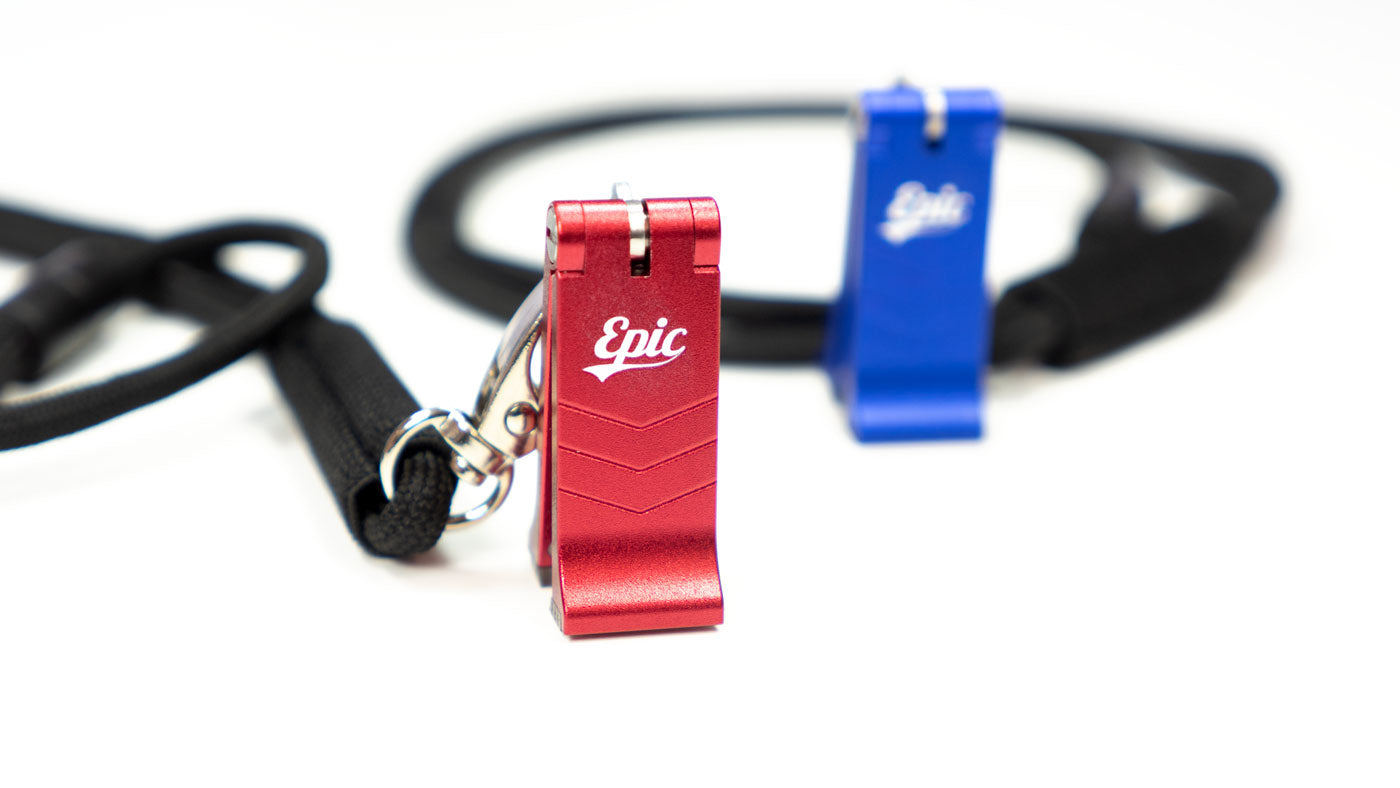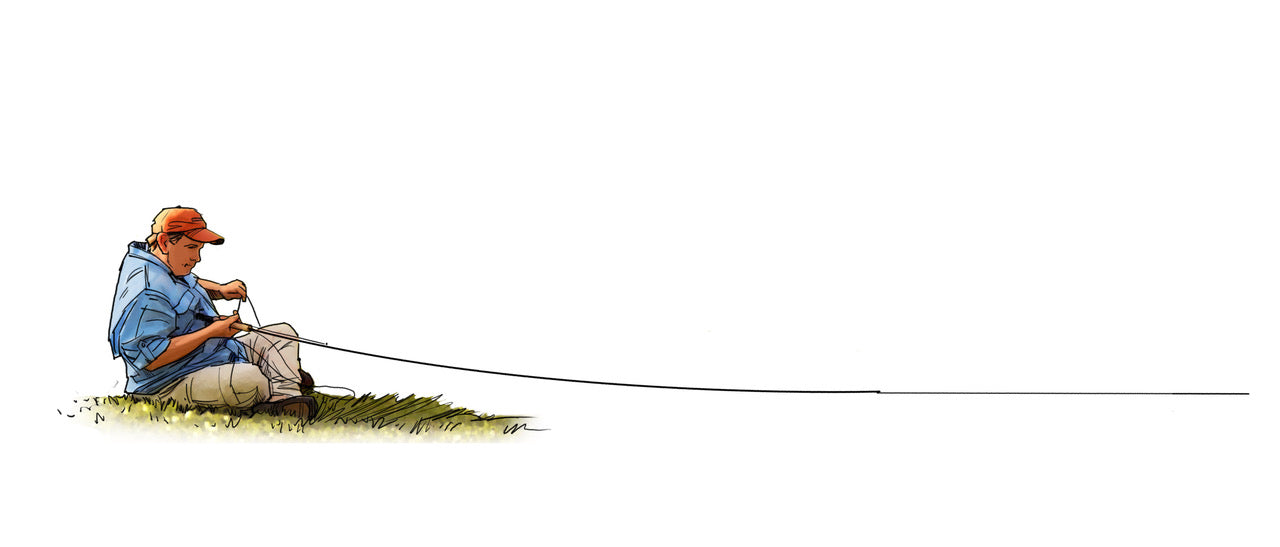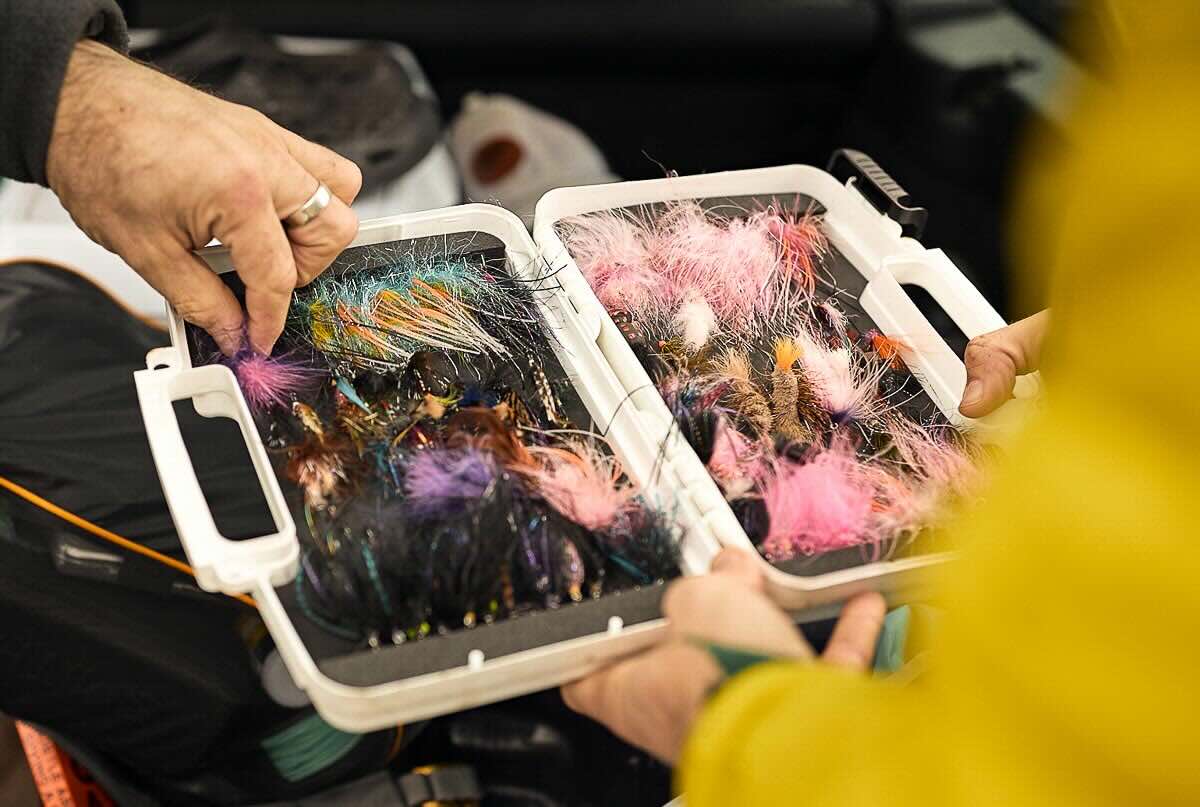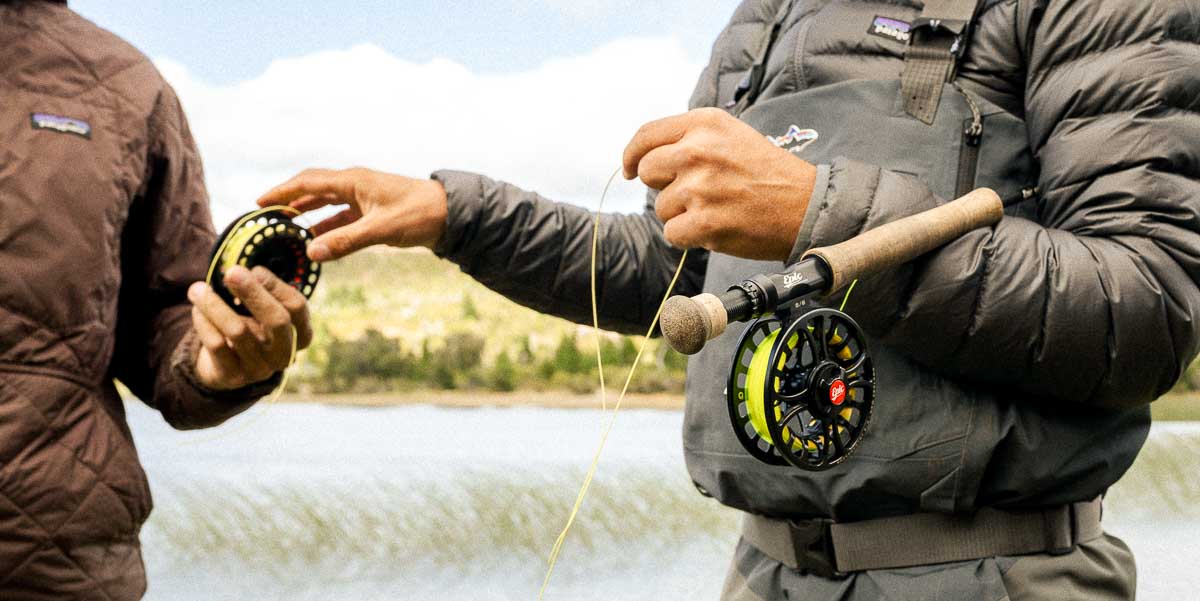The freedom and solitude that a kayak provides is unlike any other fishing experience. The skills that you develop by kayak fishing will enhance your casting in all fly-fishing situations.
Fly fishing is in many ways the toughest way to fish, but also the most rewarding. When you take to the kayak, you are upping the ante considerably. All the sudden that beautiful 60 ft. loop of line looks more like an EKG reading gone mad. With a little focused practice on kayak-specific skills, you will eliminate frustration and find greater enjoyment on the water.
Before we get into those skills, I have two bits of advice. First, you need to practice on the grass. 15 minutes a day is perfect. Practice each task while sitting on the ground and focus on developing a compact and efficient casting style to eliminate unnecessary boat rocking. Second: Leave your spinning rod at home. Going out with only a fly rod will force you to figure it out. Many times, I have had students tell me “Well, I tried it for a while and then I saw some fish, so I grabbed my spinning rod.” View your next few trips as character-building experiences and you will improve greatly.
1. The Pick-up
This skill is perhaps the most important because it is the first move you make. If the pick-up is jerky, the remainder of the cast will likely follow suit. Commonly, the line is “ripped” off the surface, leaving a trail of froth behind. Start with your rod tip on the ground (or in the water), then slowly lift the rod nearly on the horizontal until only the fly and leader remain on the surface, letting the wrist give slightly. Next, simply “pluck” the fly from the surface by snapping the arm and wrist into the upright position. If you are using a cork-bodied popper, you will see only a slight exit splash from the fly.

2. Build a better Back Cast
Fly casting from a kayak will surely test your casting skills and most noticeably the back cast. Because you are much closer to the water, your timing will simply need to be better. A fly rodder can usually get away with a slightly sagging back cast when standing on the deck of a flats boat or even wading but sitting low in a kayak makes you aware of your shortcomings with every “slap” of the water. In general, the back cast is the energy-storing phase of the cast. Most of the power should be applied here. By stopping the rod briskly in the upright position, you’ll send the line directly behind you, unrolling at head-level. Once the line straightens completely the forward stroke begins. Practice your back cast by placing a lawn chair behind you at 30 feet. Now, sit on the ground and make a series of back casts, making sure that the line hits the chair before it touches the ground. If the back cast straightens out at head-level behind you, it should straighten out at head-level in front as well.

3. Roll Cast Pick-up
Think of the roll-cast pick-up as an escape plan when you have a mess of line on the water. If you have slack line outside of your rod-tip, it will be very difficult to make a cast. A roll cast is made by placing the line behind you, raising the rod to the upright position and then driving the rod-tip forward in a straight path. For a roll cast pick-up, don’t let the line hit the water in front, but rather allow the line to straighten in front of you and then make a false cast. This is also the way you execute a “Fly-in-hand” presentation. For an accurate cast, make sure the line straightens 180 degrees from your target.

4. Retrieving the Fly and “Strip-Setting” the Hook
The most common reason for not getting a proper hook set is that rod tip is in the air and not in the water. In other types of fishing the rod is held at a higher angle (that’s why it is called angling), but because fly line has weight and mass, it will sag and cause slack. When a strike is not detected, it’s usually because there is not a direct connection between the fly and line hand. After the stop on the forward cast, lower the rod tip to the surface and don’t move it until you’re ready to make your next cast. Retrieve the fly only by stripping the line- not by moving the tip of the rod. This way, you are moving the fly through the water with no slack and when a strike occurs, you can just make a harder strip to drive the hook home.

5. Landing a Fish and Freeing Snags
This is where most rod tips are broken. The tip sections of fly rods are fragile. They are intended for casting not prying and yanking. When you battle a fish by raising the rod tip, it weakens your position- the closer to vertical, the less pressure you put on the fish and more pressure on the tip. Play your fish with a deep bend in the rod and when the fish gets close to the kayak, pull out some extra line, grab the leader and take all tension off the rod tip. When snagged, do not bend the tip to free it. Point the tip directly at the snag and pull. If you must go in to get the fly, pull out an ample amount of line, lay the rod down and “handline” your way into the brush.
6. Wind Casting
Dealing with wind is a given, but it shouldn’t keep you from enjoying your fly rod. Two Simple adjustments in your cast will help you overcome even a stiff head wind- the one most anglers dread. If you learn to deal with it, staying down wind of your fish allows you to get closer without spooking. First, change the trajectory of the line so that it straightens out at an upward angle in the back and lower angle in front. This will use the wind to your advantage on the back cast, allowing the wind to add line speed and keep the line suspended in the air longer. Next, rather than placing the emphasis on the back cast, apply extra power to the slightly downward forward stroke. make sure to stop the stroke decisively in the direction of the target. This is the same as an accuracy cast.
When dealing with a tailwind, an elliptical /Belgian cast is best. Keep your back cast low by making a side-arm back cast and then transition to an overhead cast on the forward stroke, sending the line in an upward trajectory and allowing the wind to carry your line outward.
Cross winds can be the most difficult for accuracy. A wind on the casting arm side will tend to blow the line and fly into the caster’s body. The common approach is to make a cross-body cast by bringing the arm in front of the face, but if you keep your arm in the normal casting position and tilt the wrist inward, this will place the rod tip over the opposite shoulder and keep the fly and line down wind. You may also choose to deliver the fly on the back cast, although long backhand casts are not easily done in a kayak. Wind to the non-casting side poses no difficulty, as the line naturally stays down wind of the caster.

7. Equipment & Rigging
The equipment that you choose for kayak fly fishing may be different from other situations. If you are navigating narrow, twisty creeks, a shorter rod that doesn’t stick out beyond the confines of the boat may be a better choice. In open water, a longer rod makes for easier casting and perhaps add a little more distance to your cast.
Like most, when I bought my first kayak, I installed every attachment and gizmo that I could. One by one, I took them off until I had only the essentials. Rod holders, anchor trolleys, rudders, brackets of all sorts can just become “line catchers.” If using a popular pedal-drive kayak, it is even more critical. Most kayakers that primarily fly fish will end up with a stripped-down vessel. If you don’t need it, leave it.
8. Shoreline approaches
Positioning your kayak is as important as the cast you make. Kayakers have a real advantage over other boaters in that they can go places and position themselves in ways others can’t. One of my favorite approaches to a brushy shoreline is to place my non-casting side right next to the brush. I will usually have a tree branch in one hand and my fly rod in the other. I just work my way down the shoreline keeping the fly tightly tucked up next to (and sometimes under) the brush. This way, I am covering 100% of the shoreline, rather than just a few spots. When a fish is hooked, it almost always runs opposite the direction that it is pulled, often into open water.
To achieve the same thorough coverage from an outward position in moving water, make your cast at the shoreline, and allow the line to move down stream ahead of the fly. Do not mend the line upstream, but rather keep the rod tip pointed at the line, and strip. The fly line has considerable mass and will provide resistance should a fish strike.
Final thoughts:
The freedom and solitude that a kayak provides is unlike any other fishing experience. The skills that you develop by kayak fishing will enhance your casting in all fly-fishing situations.

Joe Mahler is one of the USA's leading fly casting instructors and author and illustrator of “Essential Knots & Rigs for Trout” and “Essential Knots & Rigs for Salt Water”. You can Book a fly casting lesson with Joe via his website here

























